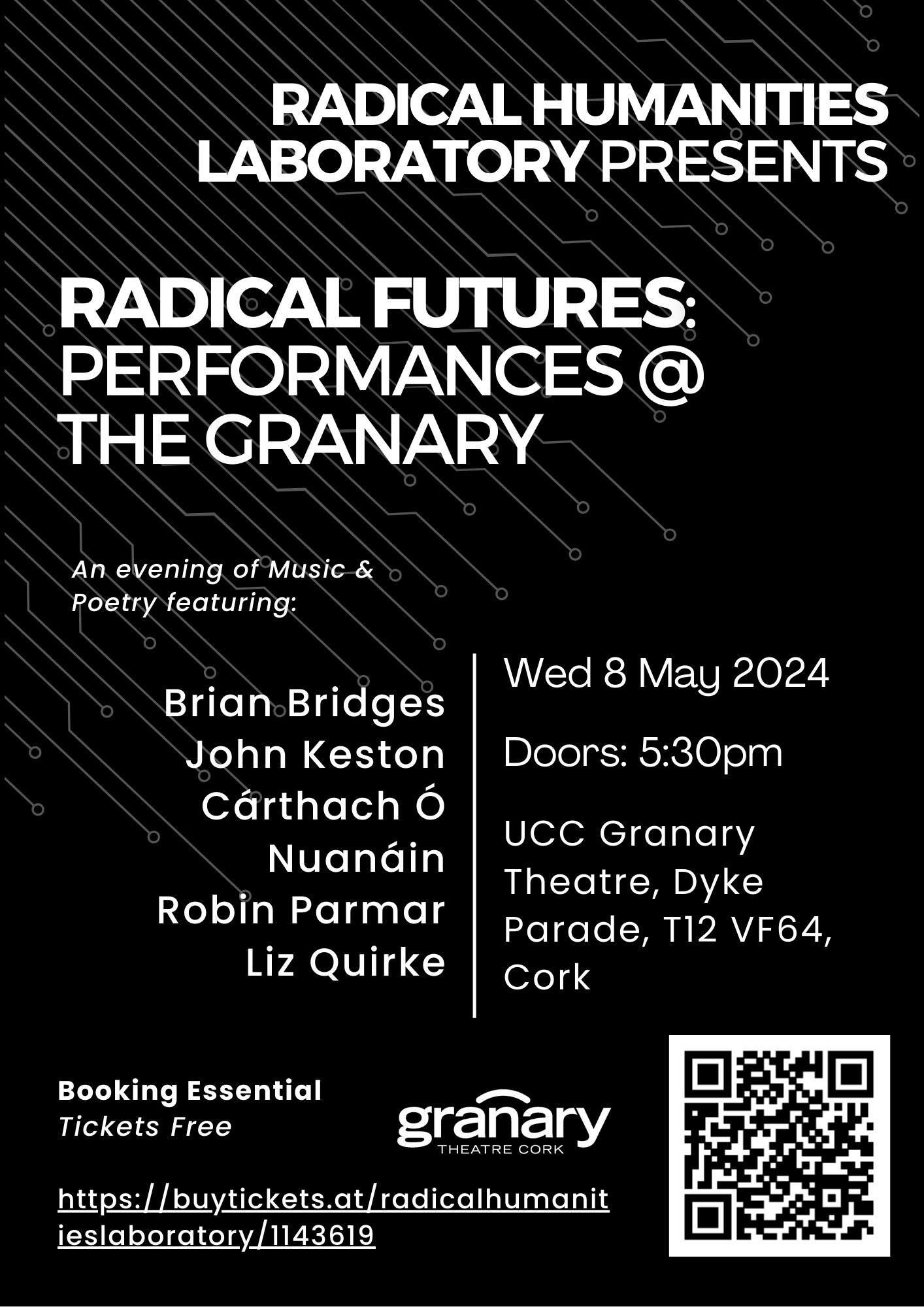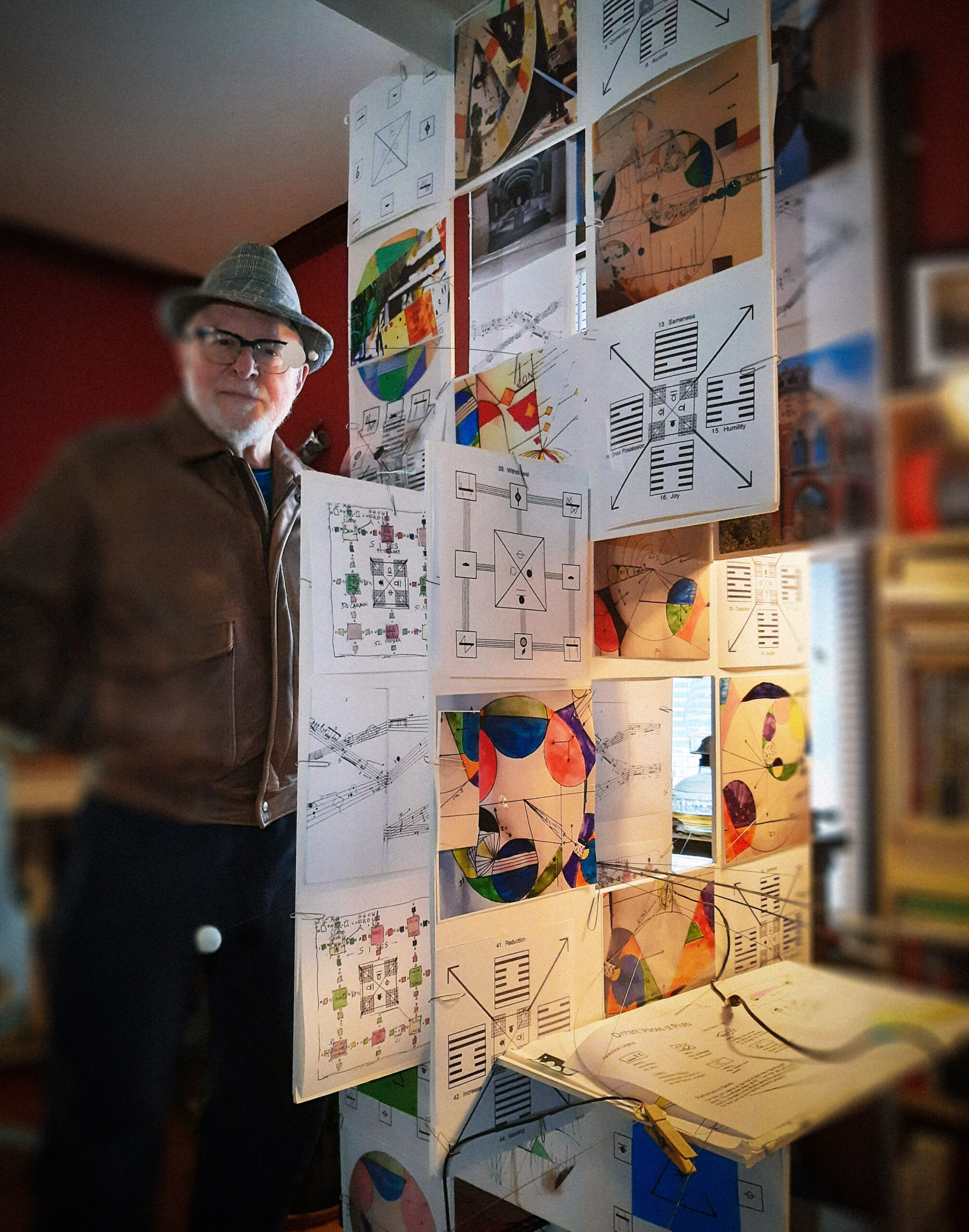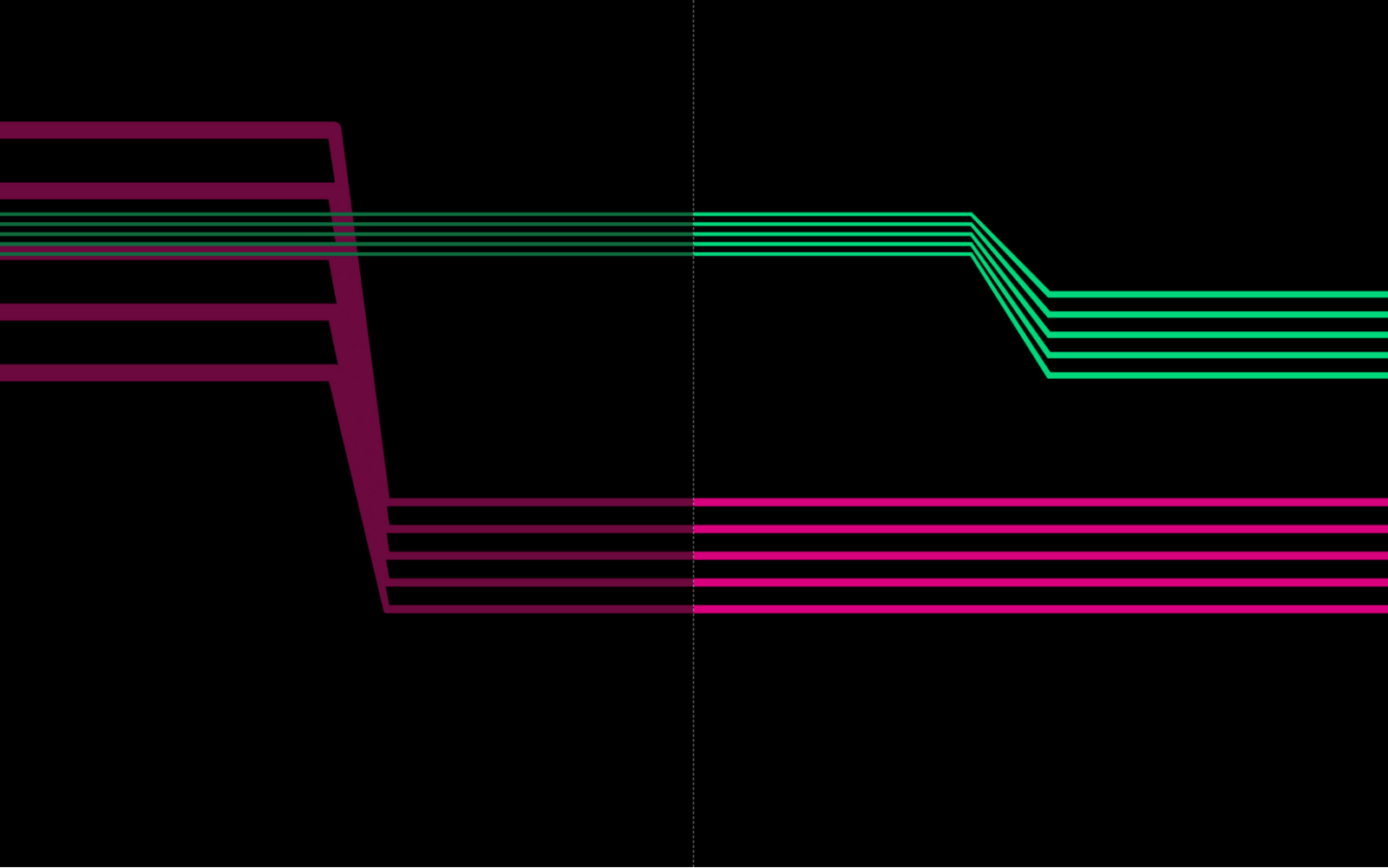This video is a new interpretation of Rhodonea (Rhodonea II) that I performed for SEAMUS (the Society for Electroacoustic Music in the US) at Purdue University on Saturday, March 22, 2025. In this version the animated, generative, graphic score developed with Processing.org sends corresponding MIDI data to an electronic instrument called the Dirtywave M8.
I debuted an earlier interpretation the piece at the Radical Futures conference at University College Cork, Ireland. At the concert I had the privilege of sharing the bill with Brian Bridges, Cárthach Ó Nuanáin, Robin Parmar, and Liz Quirke.

Rhodonea is a series of audiovisual etudes performed as a model of how we might collaborate with near future synthetic entities. Software feeds automated, algorithmic, projected visual cues, tempi, and low frequency oscillations to improvising electronic musicians. The compelling visuals, based on Maurer Roses, suggest melodic, harmonic, and percussive gestures that are modulated by data streaming from the generative animations. Throughout the piece artists adapt to the familiar yet unpredictable graphic scores and corresponding signals. The end result is an impression of how humans might interact with AI in a collaborative and experimental way.
I chose to perform Rhodonea as a soloist although it can be performed by an ensemble of up to four musicians. The generative and improvisational aspects mean that every performance is different than the next, but the piece has a consistent signature that leads the music. This includes modulation corresponding to each rhodonea that is translated into MIDI data and fed to parameters that effect the timbre and other aspects of the instruments. I captured the videos shortly after each performance to illustrate the different interpretations.
For Radical Futures I used four instruments inside Ableton Live 12 controlled by an Arturia KeyStep to minimize the gear I needed to travel with. The Ableton instruments I used were Drift, two instances of Meld (a macrosynth new in Live 12), and Collision. In the video below you can see how the generative graphics are manipulating the filter in Drift.



